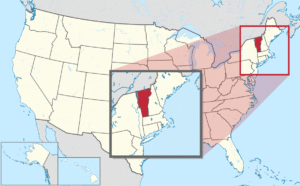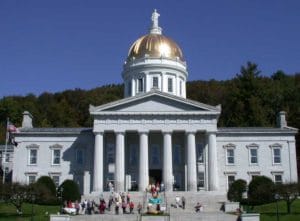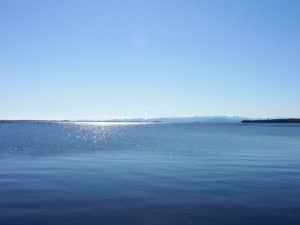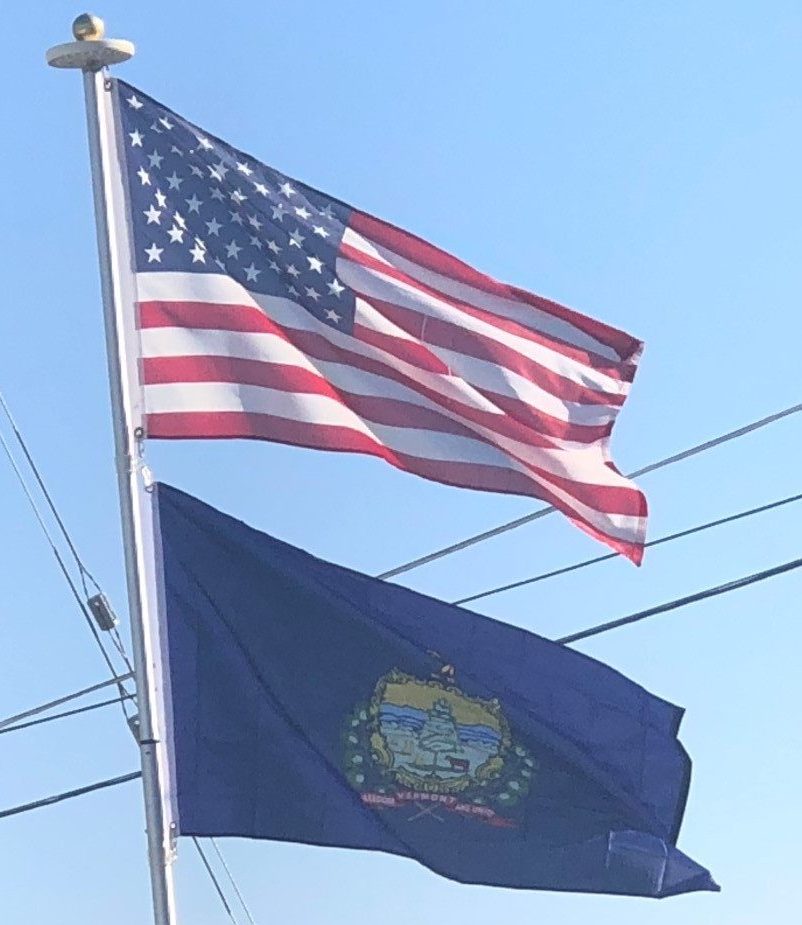Introduction:
Vermont is a state in the New England region of the northeastern United States. It borders the U.S. states of Massachusetts to the south, New Hampshire to the east and New York to the west, and the Canadian province of Quebec to the north.

Vermont is the second smallest by population and the sixth smallest by area of the 50 U.S. states. The state capital is Montpelier, the least populous state capital in the United States. The most populous city is Burlington. As of 2015, Vermont was the leading producer of maple syrup in the United States. It was ranked as the safest state in the country in 2016.

Geography:
Vermont is located in the New England region of the Northeastern United States and comprises 9,614 square miles, making it the 45th-largest state. It is the only state that does not have any buildings taller than 124 feet.
The west bank of the Connecticut River marks the state’s eastern border with New Hampshire, though much of the river is within New Hampshire’s territory.
Lake Champlain, the sixth-largest body of fresh water in the United States, separates Vermont from New York in the northwest portion of the state. From north to south, Vermont is 159 miles long. Its greatest width, from east to west, is 89 miles at the Canada–U.S. border; the narrowest width is 37 miles at the Massachusetts line. The width averages 60.5 miles (97.4 km). There are fifteen U.S. federal border crossings between Vermont and Canada.

There are five distinct physiographic regions of Vermont. Categorized by geological and physical attributes, they are: the Northeastern Highlands, the Green Mountains, the Taconic Mountains, the Champlain Lowlands, and the Vermont Piedmont.
History:
Between 8500 and 7000 BCE Native Americans inhabited and hunted in present-day Vermont. During the Archaic period, from the 8th millennium BCE to 1000 BCE, Native Americans migrated year-round. During the Woodland period, from 1000 BCE to 1600 CE, villages and trade networks were established, and ceramic and bow and arrow technology was developed. During colonial times, the state was mainly occupied by an Abenaki tribe known as the Sokoki, or Missiquois. However, the eastern part of the state may have also been home to the Androscoggin and Pennacook peoples. The population in 1500 CE was estimated to be around 10,000 people.
The first European to see Vermont is thought to have been Jacques Cartier in 1535. On July 30, 1609, French explorer Samuel de Champlain claimed Vermont as part of New France. In 1666, French settlers erected Fort Sainte Anne on Isle La Motte, the first European settlement in Vermont.

In 1690, a group of Dutch-British settlers from Albany established a settlement and trading post at Chimney Point 8 miles west of present-day Addison. The first permanent British settlement was established in 1724 with the construction of Fort Dummer. It was to protect the nearby settlements of Dummerston and Brattleboro.
